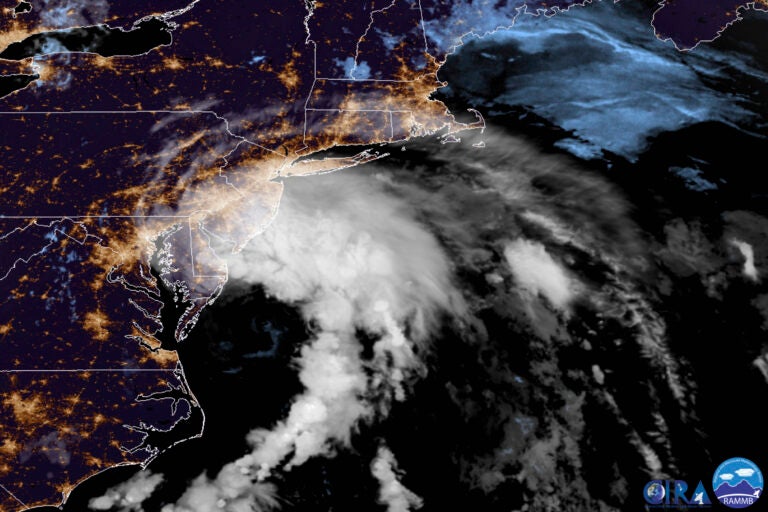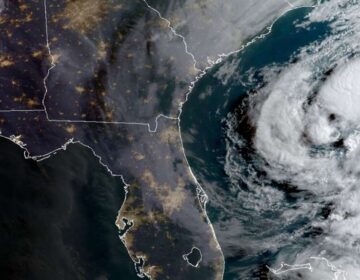Tropical Storm Fay shutters beaches as it heads north
Several beaches in Delaware had been temporarily closed because of the storm.

This GOES-16 satellite image taken at 9:30 UTC (5:30 a.m. EDT) on Friday, July 10, 2020 shows Tropical Storm Fay as it moves closer to land in the northeast of the United States. (NOAA via AP)
Beaches closed in Delaware and rain lashed the New Jersey shore Friday as the fast-moving Tropical Storm Fay churned north on a path expected to soak the New York City region.
The storm system was expected to bring 2 to 4 inches (5 to 10 centimeters) of rain, with the possibility of flash flooding in parts of the mid-Atlantic and southern New England, The U.S. National Hurricane Center said in its 11 a.m. advisory. That’s down from earlier forecasts of about 3 to 5 inches (8 to 13 centimeters) of rain.
Several beaches in Delaware had been temporarily closed because of the storm. And police in Ocean City asked drivers to avoid southern parts of the tourist town because flooding had already made some roads impassable.
A tropical storm warning remained in effect from Fenwick Island, Delaware, to Watch Hill, Rhode Island. The warning area includes Long Island and the Long Island Sound in New York, forecasters said. The center of the storm remained off the mid-Atlantic Coast on Friday morning.
“We expect some pretty heavy winds, and we need people to be ready for that, and some flash flooding in certain parts of the city,” New York City Mayor Bill de Blasio said at a briefing Friday morning.
The summer storm’s impact on the city was expected to be ”pretty limited,” but de Blasio said it would be a bad night for outdoor dining — the only sit-down service allowed at city restaurants because of the pandemic.
“If you were going to go out tonight, instead order in and keep helping our restaurant community,” he said.
President Donald Trump said the storm is being monitored and that the Federal Emergency Management Agency was poised to help if needed.
“We’re fully prepared. FEMA’s ready in case it’s bad. Shouldn’t be too bad, but you never know,” Trump told reporters while departing the White House for Florida.
Trump postponed his Saturday rally in New Hampshire due to the weather, Press Secretary Kayleigh McEnany said.
The storm picked up speed Friday morning, moving north around 12 mph (19kph) and producing top sustained winds of 60 mph (97 kph), forecasters said. Earlier observations showed it moving at 8 mph (13 kph) with top sustained winds of 45 mph (75 kph).
Fay is the earliest sixth-named storm on record, according to Colorado State University hurricane researcher Phil Klotzbach. The previous record was Franklin on July 22, 2005, Klotzbach tweeted.
Two named storms formed before the official June 1 start of the hurricane season. None of this season’s previous five named storms strengthened into hurricanes.

Get daily updates from WHYY News!
WHYY is your source for fact-based, in-depth journalism and information. As a nonprofit organization, we rely on financial support from readers like you. Please give today.





